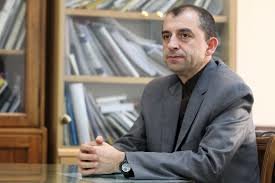Earthquake early warning system for Tehran

Tehran is a city known for its high seismic risk. Efforts are focused to reduce earthquake risk in this megalopolis and one of those is to come up with early warning system for earthquakes in Tehran.
The earthquake early warning (EEW) system is a seismological technology aimed at detecting the receiving seismic waves in order to switch-off automatically, and put waves in safe mode as fast as possible in the important infrastructures such as urban subway system, systems, hydrocarbon reservoirs and tanks, etc.
The basic concept for early warning system is based on receiving primary (P) seismic waves, developing an alarm and sending a warning signal to indicate that the secondary (S) waves is coming. (S waves are normally the most devastating seismic waves).
This article will describe an earthquake early warning system which is under development for the city of Tehran.
Seismic records of Iran indicate the occurrence of many devastating seismic events, some of which were in densely populated areas, in the vicinity of major faults.
Fresh residential tower constructions in Velenjak (northern Tehran) falling on the North Tehran Active Fault Zone. Tehran, as an example, with a population of more than 10,000,000, is surrounded by many active faults. Therefore, an earthquake early warning can be a useful short-term solution to reduce damages and potential casualties of a large earthquake.
As of seismic instrumentation, three major seismic networks are operating in Iran, which are in need of further development and integrity:
1: Iran Strong Motion Network (ISMN), using over 1,000 digital accelerographs, out of which only 50 stations employ GPS timing.
2: Iranian National Seismic Network (INSN), including 30 real-time broadband stations.
3: Iranian Seismic Telemetry Network, (ISTN) with seventy, 3-component seismographs (mostly short-period and occasionally broadband) with real-time connection.
Due to low network density and lack of absolute timing in many stations, the available seismic records are sometimes of poor quality. Furthermore, some important seismic incidents are not recorded.
We chose a method to make the best use of the available data. A combination of Tau-c Pd and Elarms which are capable of using both single-station and multi-station data to minimize the exclusion of poorly covered events. The method also has the advantage of using more accurate accidents. The results, not only are the theoretical base for a future warning system, but also can be used to optimize and modify the existing seismic networks.
Many population centers in Iran have experienced some devastating earthquakes in the past, or being in the vicinity of major faults, and expect one in the future. Tehran, the political and commercial capital of Iran, surrounded by many active faults, is a notable example.
While implementation of seismic building codes is the long-term measure to reduce damages and fatality in hazard prone areas, seismic early warning systems can be a short-term solution as well as a complementary part of the long-term approach to sustainable development.
In the present paper, a method of rapid magnitude determination for early warning system is applied to some important seismic events in southern Alborz and north-central Iran.
An important approach to earthquake early warning is based on using the Primary (P) wave to estimate the overall size of an earthquake. The waveform of P wave reflects how the slip on the fault plane is occurring. More precisely, the effective period of the waveform increases with Mw up to Mw = 6.5.
Most methods attempt to define a measure of the effective period and use it as an indicator of magnitude. Many studies use displacement and velocity time series to calculate.
However, the present work tries to develop a relationship between acceleration, mainly because the most densely distributed seismic network is the Iran Strong Motion Network (ISMN) with over 1,000 digital accelerographs, and an indicator which needs fewer calculations would be more favorable.
However, the present efforts focus to develop the empirical relationships between acceleration and an indicator.
That is because the most densely distributed seismic network in Iran is the Iran Strong Motion Network (ISMN) with over 1,000 digital accelerographs, although fewer calculations is favorable.
Expectedly, regression results are different from that of previous works. This could be described by the high frequency nature of acceleration in comparison to velocity and displacement. Furthermore, the limited number of records for some of the events is expected to affect the regression coefficient adversely.
Future works should address a larger number of events, and also provide a basis to combine analog records without decreasing data integrity.
Mehdi Zare is professor of engineering seismology at International Institute of Earthquake Engineering and Seismology (IIEES) in Tehran.
Zare can be reached at: mzare@iiees.ac.ir
Leave a Comment